Wine Spotlight: Bold Elegance – South African Shiraz Unveiled
Interested in making South African Shiraz? Give us a call at 877-812-1137 to speak to a winemaking representative about your order.
Appearance:
In the glass, South African Shiraz commands attention with its deep, inky purple color. The richness of its hue hints at the robust character that awaits.
Aroma:
Upon the first swirl, the nose is greeted by an enticing bouquet of dark fruits and subtle spices. Blackberry and ripe plum take center stage, accompanied by a hint of black pepper and a touch of smoky oak (either French or American oak, medium toast). The aromatic profile is bold and inviting, setting the stage for the complex layers to unfold. (yeast suggestions: BDX, D80, D254)
Palate:
As the wine graces the palate, it delivers a symphony of flavors that reflect the warmth and intensity of the South African sun. Black cherry and blueberry dance alongside notes of dark chocolate and a subtle hint of vanilla from careful oak aging (either French or American oak, medium toast). The wine’s full-bodied nature is complemented by velvety tannins that add a luxurious texture, creating a well-balanced and deeply satisfying experience.
Flavor Profile:
South African Shiraz is a showcase of the varietal’s bold and expressive character. The dark fruit flavors are complemented by a savory undercurrent, with a touch of black pepper adding a hint of spice. The integration of oak is seamless, contributing to the wine’s complexity without overpowering its vibrant fruit profile.
Pairing Suggestions:
A robust Shiraz is a natural companion to hearty dishes. Pair it with a juicy grilled steak, lamb stew, or a rich, meaty pasta for a perfect match. Its bold flavors and well-structured tannins also make it an excellent candidate for aging, allowing the wine to evolve and develop further complexity over time.
Overall:
South African Shiraz is a testament to the region’s ability to produce wines of depth and character. It balances power with finesse, showcasing the winemaker’s artistry in capturing the essence of the grape and the terroir. It’s a wine that invites contemplation and celebration.
Interested in making South African Shiraz? Give us a call at 877-812-1137 to speak to a winemaking representative about your order. Cheers!
Unveiling the Artistry Behind Chilean Wine: A Toast to Excellence
In the world of winemaking, few regions can boast the combination of unique terroir, skilled artisans, and a rich cultural history quite like Chile. Nestled between the Andes Mountains and the Pacific Ocean, this South American gem has been quietly gaining recognition as a powerhouse in the global wine industry. Let’s embark on a journey to discover why making Chilean wine is nothing short of an art form.
The Terroir Advantage:
Chile’s diverse geography, ranging from the arid Atacama Desert to the cool, maritime-influenced climate of the coastal areas, provides winemakers with a canvas of terroirs. The result is a wide spectrum of flavors and aromas that make Chilean wines unique. From the robust reds of Curico Valle, each sip reflects the character of its terroir.
Sustainable Practices:
Chilean winemakers have embraced sustainable and organic practices, aligning their craft with environmental consciousness. Many vineyards prioritize biodiversity, water conservation, and minimal chemical intervention. This commitment not only preserves the pristine landscapes but also enhances the purity and authenticity of the wines produced.
Iconic Grape Varieties:
Chilean winemaking is defined by its dedication to traditional grape varieties, with a particular focus on Carmenere, often referred to as Chile’s signature grape. This once-forgotten Bordeaux varietal found its new home in Chile, producing wines with luscious dark fruit flavors and a distinct spiciness. Cabernet Sauvignon, Merlot, and Sauvignon Blanc also thrive in the fertile soils, contributing to the country’s diverse wine portfolio.
Innovation and Modern Techniques:
While honoring tradition, Chilean winemakers are not afraid to embrace innovation. State-of-the-art winemaking facilities equipped with modern technology allow for precise control over the winemaking process. This fusion of tradition and innovation ensures the consistency and quality of Chilean wines, earning them accolades on the international stage.
In the world of winemaking, Chile stands as a testament to the perfect marriage of nature’s gifts and human craftsmanship. The artistry behind making Chilean wine is a celebration of terroir, sustainability, iconic grape varieties, and a commitment to excellence. So, the next time you uncork a bottle of Chilean wine, savor not just the liquid in the glass but the story of a nation passionate about producing wines that captivate the senses.
Interested in making South African or Chilean Wine? Give us a call at 877-812-1137 to speak to a winemaking representative about your order. Cheers!
Chilean Wine Notes
Why make wine from Chile? Because it’s like bottling up sunshine and smiles!
Picture this: rolling vineyards nestled between the Andes Mountains and the Pacific Ocean, where grapes bask in the perfect blend of cool coastal breezes and warm, sunny days. Chile’s diverse terroir makes it a winemaker’s paradise, offering a kaleidoscope of flavors just waiting to be uncorked.
CHILEAN WINE NOTES
Cabernet Sauvignon:
A flagship for Chile, their Cabernet Sauvignon impresses with its deep ruby color and complex aromas of blackcurrant, cherry, cedar, and tobacco. On the palate, it’s rich and full-bodied, with well-integrated tannins and a long, lingering finish.
Cabernet Franc:
Cabernet Franc from Chile offers an elegant expression of the varietal. With aromas of red berries, violet, and herbs, it’s vibrant and aromatic. On the palate, it’s medium-bodied with silky tannins and a fresh, persistent finish.
Carmenere:
Chilean Carmenere showcases the best of Chile’s signature grape. With deep purple color and aromas of blackberry, plum, and spices, it’s captivating. Lush and velvety on the palate, with flavors of ripe fruit, chocolate, and a touch of smokiness.
Malbec:
A standout example of great winemaking grapes, the Chilean Malbec boasts intense aromas of blackberry, plum, and violet, with hints of vanilla and spice. On the palate, it’s full-bodied and expressive, with ripe tannins and a long, smooth finish.
Merlot:
Chilean Merlot offers aromas of ripe plum, cherry, and spices, with subtle hints of chocolate and vanilla. Medium-bodied and smooth on the palate, with soft tannins and a lingering finish.
Pinot Noir:
The Chilean Coastal Pinot Noir exhibits delicate aromas of red fruits, flowers, and earthy notes. Light-bodied and elegant, with vibrant acidity and silky tannins, it’s a perfect expression of Chilean terroir.
Syrah:
Syrah from Chile showcases the richness and depth. With aromas of blackberry, blueberry, and pepper, it’s intense and alluring. Full-bodied and velvety on the palate, with layers of dark fruit, spice, and a long, lingering finish.
Chardonnay:
From the cool-climate region of Chile, Chardonnay offers aromas of tropical fruits, citrus, and vanilla. Medium to full-bodied, with a creamy texture and balanced acidity, it’s a delightful expression of Chilean Chardonnay.
Pinot Grigio:
Pinot Gris from Chile showcases fresh aromas of green apple, pear, and citrus, with floral undertones. Crisp and refreshing on the palate, with lively acidity and a clean, mineral-driven finish.
Sauvignon Blanc:
Chilean Sauvignon Blanc has aromas of grapefruit, lime, and herbs. Crisp and vibrant on the palate, with zesty acidity and a refreshing finish.
Viognier:
Viognier from Chile displays enticing aromas of apricot, peach, and orange blossom, with hints of honey and spice. Medium-bodied and luscious on the palate, with a smooth, lingering finish.
Interested in making Chilean Wines? We have the grapes and juices! Give us a call at 877-812-1137 to speak to a winemaking representative about your order. Cheers!
Cheers to Spring Winemaking Adventures!
Hey there, fellow vintners and grape aficionados,
As the frost thaws and the vines awaken from their winter slumber, can you feel that excitement bubbling up like a well-aged Cab Sauv? That’s right, it’s time to dust off those barrels, polish those glasses, and get ready to dive headfirst into the spring winemaking season!
Whether you’re dreaming of crisp Chardonnays, robust Merlots, or something in between, now’s the time to get those orders in. From grapes, juices, fermenting tanks, corks, and everything in between, we’ve got you covered. So, why wait? Let’s uncork the magic of spring together!
2024 Spring Grape Offerings:
Chile: Cabernet Sauvignon, Cabernet Franc, Carmenere, Malbec, Merlot, Petite Verdot, Pinot Noir, Syrah, Chardonnay, Pinot Grigio, Sauvignon Blanc, and Viognier
2024 Spring Juice Offerings:
South Africa: Shiraz, Merlot, Pinotage, Cabernet Sauvignon, Semillon, Chardonnay, Pinot Grigio, Chenin Blanc, and Sauvignon Blanc.
Chile: Cabernet Sauvignon, Cabernet Franc, Carmenere, Malbec, Merlot, Petite Verdot, Pinot Noir, Syrah, Chardonnay, Pinot Grigio, Sauvignon Blanc, Viognier, and Muscat.
Crush/Destemm will be back!
We will be crushing and destemming again this year! However, there is a minimum order of 24 cases of Spring grapes. This will give you 6 pails of must, and about 20+ gallons of juice to work with.
Winemaking Classes:
Check out Musto Wine Grape & Frank Renaldi’s online classes via our sister site WinemakingInstructions.com.
Winemaker Hours:
Winemaker Sam Lee will be in the store and available for questions on Tuesdays and Fridays from 8:00AM-4:00PM. If you want to speak to a winemaker in person, make sure to stop by and see Sam! You can also email him at slee@juicegrape.com.
March Store Hours:
Mon-Fri: 8:00AM-4:00PM
Sat-Sun: Closed
Ready to take your winemaking to new heights? Simply shoot us an email or give us a call, and we’ll make sure you’re all set to rock this winemaking season.
Here’s to the grape adventures ahead!
Quick Spring Winemaking Season Update
Quick Spring Winemaking Season Update
Helo Winemakers,
I hope this finds you well and in good spirits. The South African and Chilean vineyards have been buzzing with activity as we start to embark on our spring winemaking season. As we look forward to the beauty of spring, I wanted to share an exciting update on our spring winemaking offerings. Below you will find this season’s offerings as well as tentative arrival times. As the season progresses, we will send you more information. But for now, check out our blog and keep an eye out for some spring winemaking inspiration!
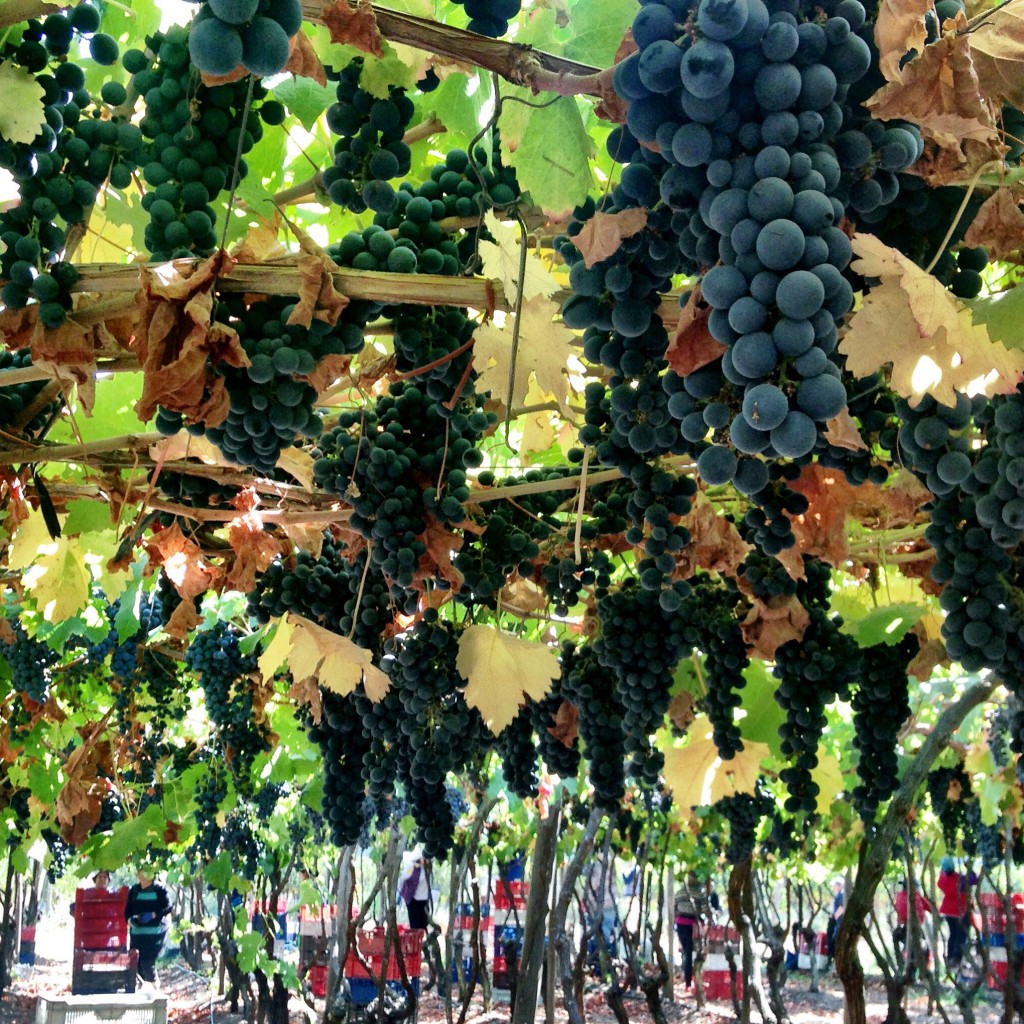
South African Season:
Arriving: End of March
Juice Varieties: Shiraz, Merlot, Pinotage, Cabernet Sauvignon, Semillon, Chardonnay, Pinot Grigio, Chenin Blanc, Sauvignon Blanc
Fresco Juice Varieties: Cabernet Sauvignon, Pinotage, Shiraz, Sauvignon Blanc
Chilean Season:
Arriving: End of April, beginning of May
Grapes Varieties: Carmenere, Cabernet Sauvignon, Cabernet Franc, Malbec, Merlot, Petite Verdot, Pinot Noir, Syrah, Chardonnay, Pinot Grigio, Sauvignon Blanc, and Viognier
Juice Varieties: Carmenere, Cabernet Sauvignon, Cabernet Franc, Cabernet/Merlot Blend, Malbec, Merlot, Petite Verdot, Pinot Noir, Syrah, Chardonnay, Pinot Grigio, Sauvignon Blanc, and Viognier.
Fresco Juice Varieties: Cabernet Sauvignon, Carmenere, Malbec, Merlot, Chardonnay, Chardonnay-Semillon, Sauvignon Blanc, Viognier
Interested in making South African or Chilean Wine? Give us a call at 877-812-1137 to speak to a winemaking representative about your order. Cheers!
How to Make Wine from South African Winemaking Juice
So how can you start making your own wine from South African juices? Follow these 10 Easy Steps (for fresh juice) and you’ll be on your way!
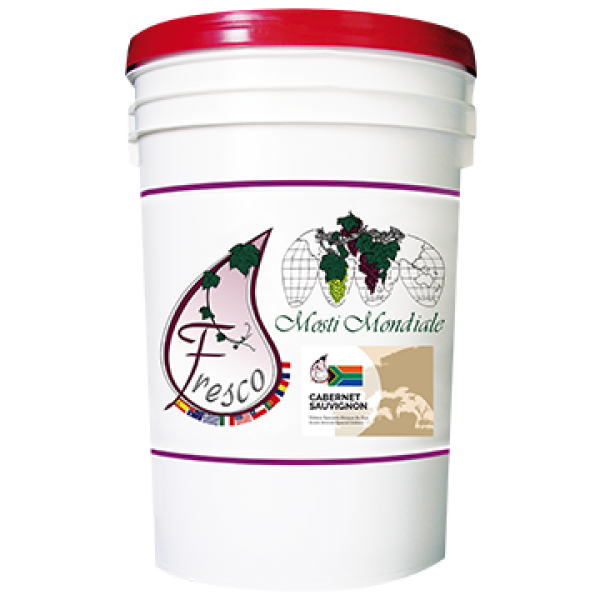
- Choose a South African variety that speaks to you.
- Come to Musto Wine Grape and pick up your pail of juice.
- Bring it home, pop open that lid, and add 1/4 tsp potassium metabisulfite to it. Add pectic enzyme if you’re going to (5 drops per gallon of juice). Give it a stir.
- Allow it to come up to room temperature – we’re talking 60 degrees or so.
- Choose your fermentation vessel: will you keep it in pails or ferment in a carboy or demijohn? Make sure everything is clean and sanitized. *Be sure there is enough room to account for fermentation foaming*
- If you are going to add fermentation tannins or additives (like oak dust, Booster Rouge, Booster Blanc) you can add that now. *Note: do not add tannins such as FT Rouge within 8 hours of adding enzyme*
- Pitch the yeast once the temperature has reached at least 60F. Yeast strain choices will vary depending on the juice you choose – ask a winemaker at Musto Wine Grape for a strain recommendation for the varietal you’re making. Follow the yeast starter directions explicitly. Be very careful of temperatures, never adding yeast if there is more than a 18 degree difference between the yeast starter liquid and the juice.
- Carefully monitor the fermentation by checking Brix levels daily. Add yeast nutrients as needed if you choose to do so.
- If you are adding malolactic cultures to your wine, you may also chose to do this at 1/3 Brix depletion. If using a malolactic nutrient (Opti-Malo Plus) with the bacterial culture, hydrate the nutrient in a separate container from the bacteria and add to the must directly before the addition of the bacteria. Follow all directions on the bacteria and nutrient packets explicitly.
- When the fermentation is complete, rack off the lees and continue aging. Many South African wines are aged with oak – if you choose to do this, you can do so in oak barrels or with oak alternatives (such as chips or staves).
Want to read more about making wine from Fresh Juice? Check out this blog post.
Can I make my own? Musto Wine Grape Company is here to help you make the wine of your dreams! The Spring South African winemaking season starts in late March, early April. Secure your winemaking grapes or juices and give us a call at (877) 812-1137 to speak with one of our Musto Crush Crew members. We can get you set up with everything you need and provide customer support along the way to ensure your success!
Spring Season Updates – 2023
Dear Winemakers,
It’s Spring time! And you know what that means…. South African and Chilean Season!! We are so excited to get winemaking again. Below is a list of all our Spring Offerings this season. Please feel free to reach out to us via email at sales@juicegrape.comor via the phone at 877-812-1137 with any questions or to make an order.
2023 Spring Grape Offerings:
South Africa: Pinotage
Chile: Cabernet Sauvignon, Cabernet Franc, Carmenere, Malbec, Merlot, Petite Verdot, Pinot Noir, Syrah, Chardonnay, Pinot Grigio, Sauvignon Blanc, and Viognier
Musto’s 2023 Spring Juice Offerings:
South Africa: Shiraz, Merlot, Pinotage, Cabernet Sauvignon, Semillon, Chardonnay, Pinot Grigio, Chenin Blanc, and Sauvignon Blanc.
Chile: Cabernet Sauvignon, Cabernet Franc, Carmenere, Malbec, Merlot, Petite Verdot, Pinot Noir, Syrah, Chardonnay, Pinot Grigio, Sauvignon Blanc, Viognier, and Muscat.
Crush/Destemm is Back!
We will be crushing and destemming again this year! However, there is a minimum order of 24 cases of Spring grapes. This will give you 6 pails of must, and about 20+ gallons of juice to work with.
Winemaking Classes:
Have you heard about our new Facebook Live series? Frank Renaldi is teaching free classes on Musto’s Facebook Page once a month. Each month Frank picks a topic to chat about and go live with a presentation, plus a q&a period. Usually scheduled on a Thursday night, make sure to keep an eye out for them. The next one will be Thursday March 30th at 7:00PM. Feel free to send Christina suggestions for future topics.
How do you access Facebook Live? It’s easy. Go to Musto’s Facebook Page on the given date/time, and Frank’s class will automatically popup on your screen. There you can ask questions in real time. We hope you enjoy this series and look forward to bringing you more information to help you make your favorite wine!
Don’t forget that you can always access Frank Renaldi’s online classes via our sister site WinemakingInstructions.com.
Winemaker Hours:
One of our on staff Winemakers -Sam Lee will be in the store and available for questions on Tuesdays and Fridays from 8:00AM-4:00PM. If you want to speak to a winemaker in person, make sure to stop by and see Sam! You can also email him at winemaker@juicegrape.com.
Store Hours:
February Hours:
Mon-Fri: 8:00AM-4:00PM
Sat-Sun: Closed
Looking forward to working with you all this Spring!
Cheers!
Spring Harvest Menu
The Spring Harvest Menu is now available to download HERE
Browse what’s available to create this Spring and give us a call (877-812-1137) or email us (sales@juicegrape.com) to secure your order!
Why you’ll love Pinotage! From our grower Grettchen van der Merwe
Why Pinotage rather than other red wines?
Because it is different. Because it is uniquely South African. And because it allows you to strike a blow against the tyranny of the conventional.

The popularity of this variety unique to South Africa has steadily been growing in the US. The 2020 harvest is well underway and the Pinotage destined for US cellars is on its way. After careful vineyard selection the grapes that are deemed worthy are immediately cooled and packed by our friendly pack house ladies.
The attitude of reverence that many people have towards wine is perhaps best illustrated with the above quote. There are surely many reasons for drinking wine and as far as Pinotage is concerned it has many things going for it. For one, and most importantly it is enjoyable. Another is that is it red – somebody once said that the first duty of wine is to be red.
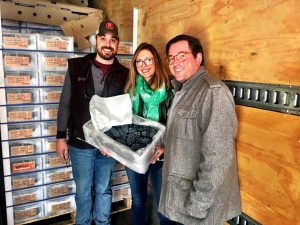
Yeast choice should be primarily based on alcohol and cold tolerance and secondarily on aroma production. Aeration during yeast rehydration is recommended for high risk fermentations (e.g. high sugar concentrations, potential nutrient imbalances and low temperatures). An enhanced estery character, suitable for wines that will be marketed earlier, will develop at fermentation temperatures of 22 – 24ºC. A less estery character, for full-bodied wines that will be marketed later, following wood maturation, is possible at temperatures of 24 – 28ºC. Fermentation at 28 – 32ºC is only recommended for full-bodied wines. Frequent mixing of skins and must by pump-overs or punch-downs is important. Skin cap temperatures exceeding 32ºC could potentially cause stuck or sluggish fermentations, or even bacterial spoilage.
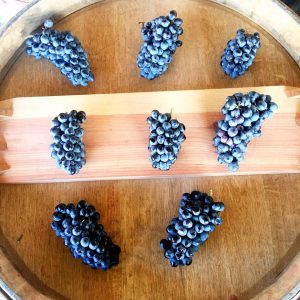
Frequent pump-overs or punch-downs during the early stages of fermentation will give less tannins as well as softer tannins. Concentrated aeration during the last phase of fermentation produces a softer tannin structure. Skin contact towards the end of fermentation or after fermentation depends on the required wine style, but pressing is usually done before completion of fermentation (2 to 8º Balling). Extended maceration is only recommended for wines made from healthy grapes harvested at optimum ripeness and that are destined for further maturation. Sensory evaluation on a daily basis is necessary.
By Grettchen van der Merwe
- To read more about the South African Wine Harvest click HERE.
- For more information about Grettchen and her winemaking click HERE.
- For more information about making Pinotage wine click HERE.
Questions? Or would like to make an order?
Call us at 877-812-1137 or email us at sales@juicegrape.com!
South African Harvest Update

While the Chilean grapes ripen and start to harvest, our South African grapes and juices are boarding boats. South Africa grows most of their wine grapes on the west coast. There is a cold current called the Benguela that flows up from the Antarctic cooling down the coastal regions; making it perfect for growing high quality wine grapes. Between the coastal cool breezes, altitudes, and fertile soils the vineyards thrive. Altitudes have a lot to do with the vineyard climate. The altitude differentiation creates micro climates throughout the Western Cape with different and interesting soil components. Stellenbosch (where we source some of our grapes) is South Africa’s hub for premier wine production. The climate is moderate and produces some of the world’s best Cabernet Sauvignon. The Breed River Valley is another region we source from that is a hot and dry climate with fertile soils. The Breede River Valley produces much of South Africa’s wine production, with many micro climates making up this viticulture area.
Cabernet Sauvignon is South Africa’s second most planted variety, right after Chenin Blanc, which is the most planted grape in South Africa. Cabernet Sauvignon from this region of the world is full bodied, notes of black fruit, and chewy tannins. Syrah from South Africa can be created in two different ways. Some winemakers create a full bodied, rich, high in alcohol, and ripe black fruit flavor. Other winemakers create a peppery Syrah that is more medium bodied. These winemaking styles depend on your maceration time and yeast you utilized. Pinotage, a cross between Pinot Noir and Cinsault, creates an interesting red wine. It can be made in a range of styles. Some winemakers make it in a Beaujolais style, others make it in more of a Burgundian style, and more and more winemakers are making it in a fruit forward style. You have lots of room to put your own creative spin on Pinotage!
This season we will have Cabernet Sauvignon, Syrah, Pinotage, and Barbera grapes available. In juice format we will have Shiraz, Merlot, Pinotage, and Cabernet Sauvignon.
There are many white wines from South Africa that are fun to make. Chenin Blanc is the white wine of South Africa and it creates a fresh, zesty, wine with notes of stone fruit. Sauvignon Blanc is another popular wine that is widely grown. South African Sauvignon Blanc is full of green citrus notes with crisp acidity.
This season we will have Sauvignon Blanc, Chardonnay, Semillon, Chenin Blanc, and Pinot Grigio juices from South Africa.
Arrival Estimates:
The Pinotage is harvesting in Mid-February, the Barbera, Syrah, and Cabernet Sauvignon will be harvested a few weeks later. The grapes and juices from South Africa should start arriving in mid-March.
Grapes Available from South Africa:
Pinotage, Cabernet Sauvignon, and Barbera
Juices Available from South Africa:
Shiraz, Merlot, Pinotage, Cabernet Sauvignon, Semillon, Chardonnay, Pinot Grigio, Chenin Blanc, and Sauvignon Blanc.
For more information on making wine from South Africa check out these blogs posts:
- Wine Spotlight: South African Pinotage
- Why I’m Making South African Syrah This Year..
- Winemaker Spotlight: Grettchen van der Merwe
- Spring Wine Yeast Suggestions
- Making Wine from Pinotage Grapes
For more information or if you would like to make a purchase please call us at 877-812-1137 or email sales@juicegrape.com






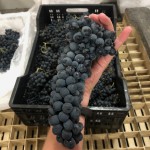
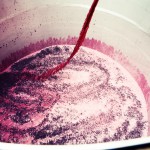
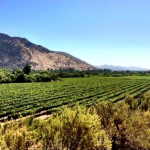
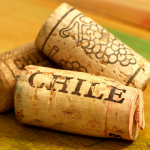
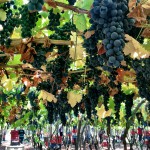
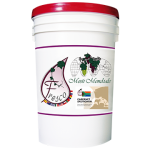
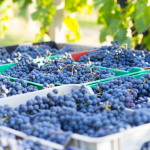
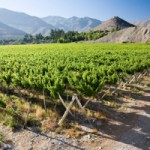

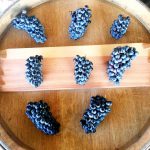
Recent Comments